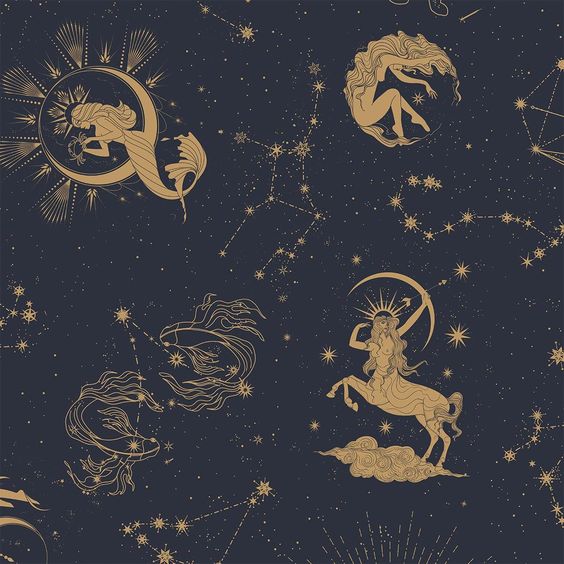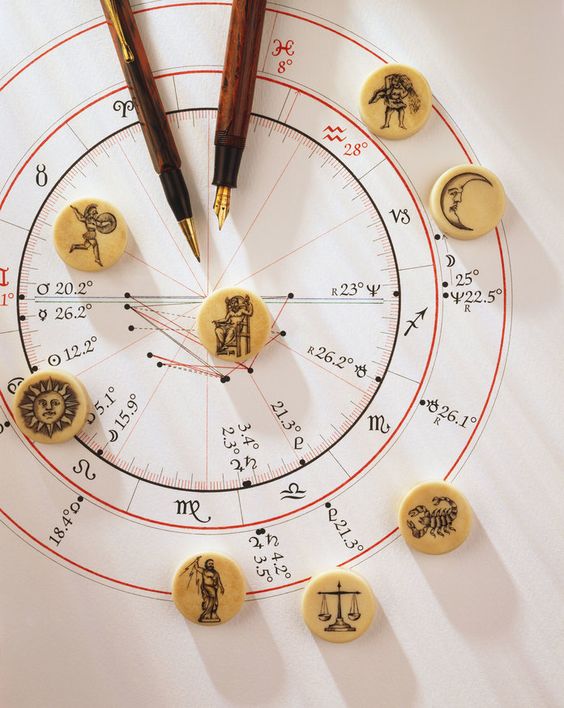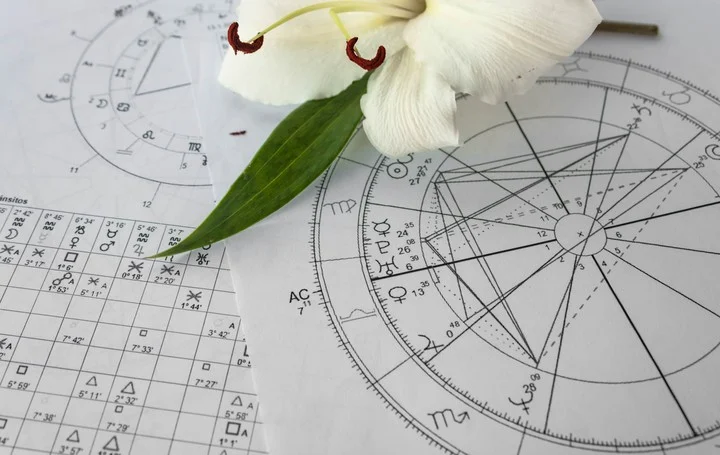
QUESTION: What Aspects to Use?

Modern astrologers utilize a range of astrological aspects to gain deeper insights into a person’s birth chart and personality. These aspects, which represent the angles formed between planets, help astrologers understand the various energies at play in an individual’s life. The major aspects, including conjunction, sextile, square, trine, and opposition, are fundamental building blocks of astrological interpretation.
1. Conjunction: The conjunction is considered the most powerful aspect in astrology because it occurs when two planets are in close proximity, sharing the same degree. This aspect is often described as having an intense and direct energy. When planets are in conjunction, their energies blend together, creating a potent force that can manifest in both positive and challenging ways. The impact of a conjunction largely depends on the compatibility of the planets involved. When planets are harmonious, the conjunction can indicate great synergy and potential. Conversely, if they are incompatible, conflicts may arise.
2. Sextile: A sextile occurs when two planets are approximately 60 degrees apart. This aspect is considered favorable, as it signifies opportunities and ease of communication between the planets involved. Sextiles often indicate areas where individuals can tap into their potential with relative ease.
3. Square: A square forms when two planets are separated by approximately 90 degrees. Squares are associated with tension, challenges, and obstacles. They can represent inner conflicts and external hurdles that individuals must overcome. However, squares also serve as powerful motivators for growth and change.
4. Trine: A trine takes place when two planets are around 120 degrees apart. Trines are considered highly harmonious aspects, signifying natural talents, ease, and flow. They represent areas where individuals are likely to experience success and good fortune.
5. Opposition: Oppositions occur when two planets are directly opposite each other in the chart, separated by approximately 180 degrees. This aspect often reflects external conflicts and challenges that individuals must confront in their lives. It can also highlight the need for balance and integration between opposing forces.
While major aspects form the core of modern astrological analysis, minor aspects, such as the semi-sextile, semi-square, novile, quintile, bi-quintile, sesquiquadrate, septile, vigintile, and decile, were traditionally used by astrologers to add subtleties and nuances to a horoscope reading. These minor aspects are less commonly emphasized in contemporary astrology but can still provide valuable insights when interpreted with precision. Exact minor aspects can sometimes be quite significant, but their interpretations may not be as readily available as those for major aspects due to their less frequent use in modern astrological practice. Nonetheless, for those who delve into the intricacies of astrological analysis, these minor aspects can offer additional layers of meaning and depth in understanding a person’s chart and life experiences.
For many people, the major aspects – conjunction, sextile, square, trine, and opposition – are the primary focus when it comes to interpreting astrological charts. These aspects carry powerful vibrations and are regarded as fundamental components of astrological analysis. The major aspects represent complex interrelationships between planets in a birth chart. They symbolize the overarching themes and influences that shape a person’s psychological makeup and life experiences. By examining these aspects, astrologers gain a deeper insight into the dynamics at play within an individual’s psyche. Each major aspect creates a unique set of internal drives and motivations. For example, a person with a strong conjunction between Mars and Pluto may have a powerful desire for transformation and intense self-expression. These aspects reveal the core motivations that guide a person’s actions and decisions.
Major aspects add fascinating layers to the astrological interpretation. They reveal not only what traits or energies are present but also how these traits interact with one another. For instance, a trine between the Sun and Jupiter may indicate natural optimism and a strong sense of self-worth, contributing to a generally positive outlook on life. The major aspects encompass a spectrum of experiences, from tension and conflict to ease and harmony. Difficult aspects like the square and opposition often demand more effort and self-awareness to navigate. They can highlight areas of challenge and personal growth. Conjunctions can also be intense and transformative, depending on the planets involved.
On the other hand, sextiles and trines tend to live in harmony and represent areas of easy expression. They showcase an individual’s abilities and talents, often indicating areas where success and fulfillment can be found. The major aspects are considered psychologically revealing, as they provide a nuanced understanding of an individual’s inner world. Astrologers use them to delve deeper into the complexities of personality, motivations, and life experiences. While the major aspects are highly valued for their depth and significance in astrology, it’s worth noting that they work in conjunction with other factors in a birth chart, including the positions of planets in signs and houses. The combination of these elements creates a unique and multifaceted astrological profile for each person. Ultimately, the choice of which aspects to emphasize in an astrological reading depends on the astrologer’s approach and the specific needs and interests of the individual seeking the reading. Some may prefer to focus on the majorettes for their psychological insights, while others might explore the entire spectrum of aspects for a more comprehensive analysis.



















 Moon Conjunct Pluto Synastry
Moon Conjunct Pluto Synastry
 Sun Square Pluto Synastry: You’ve Got That Power Over Me
Sun Square Pluto Synastry: You’ve Got That Power Over Me
 Scorpio’s Cold Withdrawal
Scorpio’s Cold Withdrawal
 Venus-Pluto Synastry: A Love So Powerful That It Might Just Kill Them
Venus-Pluto Synastry: A Love So Powerful That It Might Just Kill Them
 Mars Square Pluto Natal Aspect: The Unbreakable Spirit
Mars Square Pluto Natal Aspect: The Unbreakable Spirit
 Mars-Pluto Synastry: Something Quite Dark and Dangerous
Mars-Pluto Synastry: Something Quite Dark and Dangerous
 Mercury Conjunct Venus Synastry
Mercury Conjunct Venus Synastry
 Uranus Transits 8th the House: Rebirth from Chaos
Uranus Transits 8th the House: Rebirth from Chaos
 Reflections on a Past Venus-Pluto Synastry Aspect
Reflections on a Past Venus-Pluto Synastry Aspect
 Venus Trine Mars Synastry
Venus Trine Mars Synastry
 Mars in Aquarius: Sex drive
Mars in Aquarius: Sex drive
 Mars-Saturn Synastry: The Eternal Loop
Mars-Saturn Synastry: The Eternal Loop
 Venus Trine Pluto: Dark Desires
Venus Trine Pluto: Dark Desires
 Composite Sun in the 8th House: Weather the Storm
Composite Sun in the 8th House: Weather the Storm
 Sun Conjunct Pluto Synastry: Enlightening or Annihilating
Sun Conjunct Pluto Synastry: Enlightening or Annihilating
 Mars Conjunct Pluto Synastry
Mars Conjunct Pluto Synastry
 Moon Opposite Uranus Natal Aspect
Moon Opposite Uranus Natal Aspect
 The Watery Gardeners: Cancer, Scorpio, and Pisces
The Watery Gardeners: Cancer, Scorpio, and Pisces
 Sun in the 12th House: From Isolation to Illumination
Sun in the 12th House: From Isolation to Illumination
 Transiting Pluto Aspect Natal Mars: Are You Mad as Hell
Transiting Pluto Aspect Natal Mars: Are You Mad as Hell